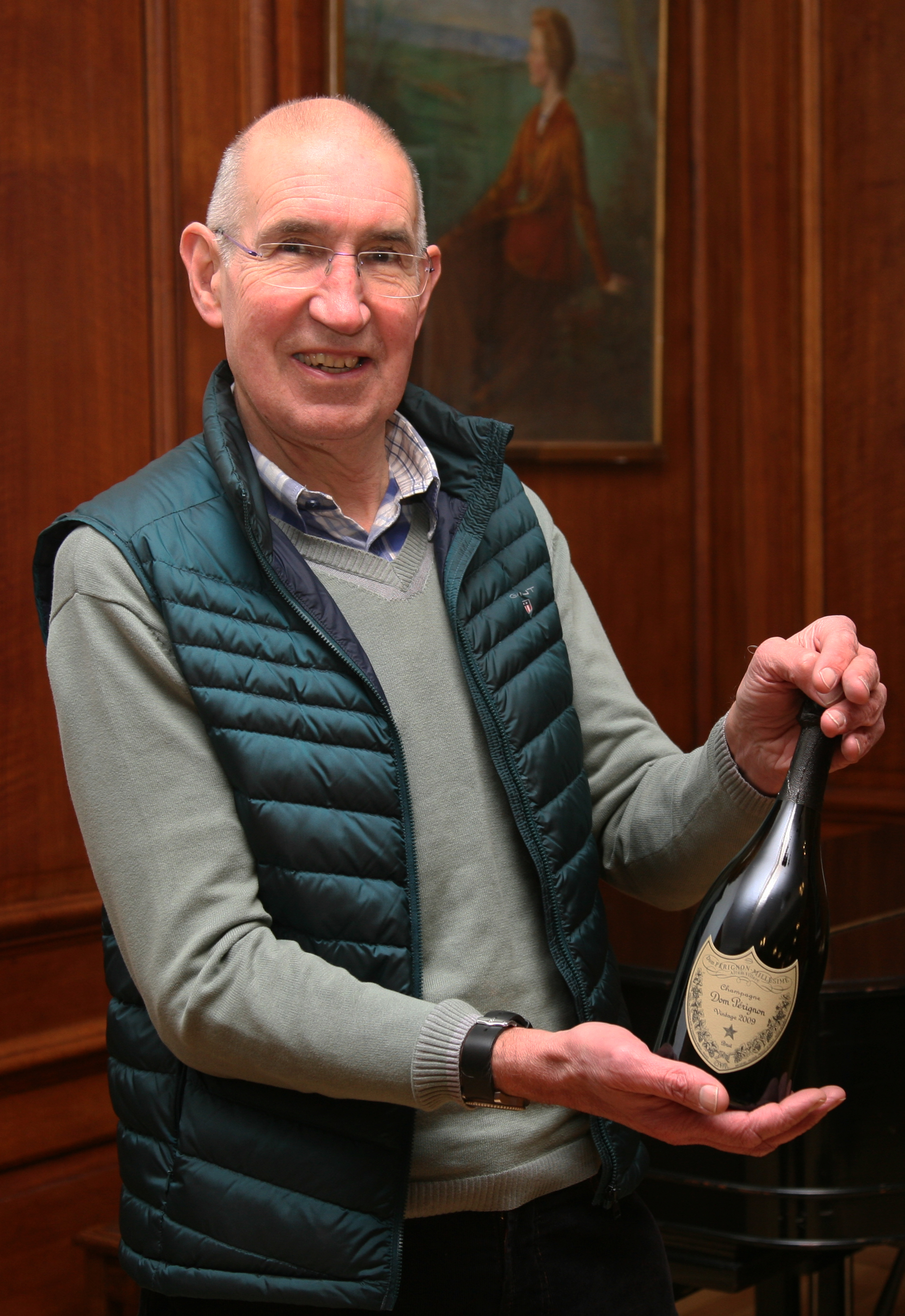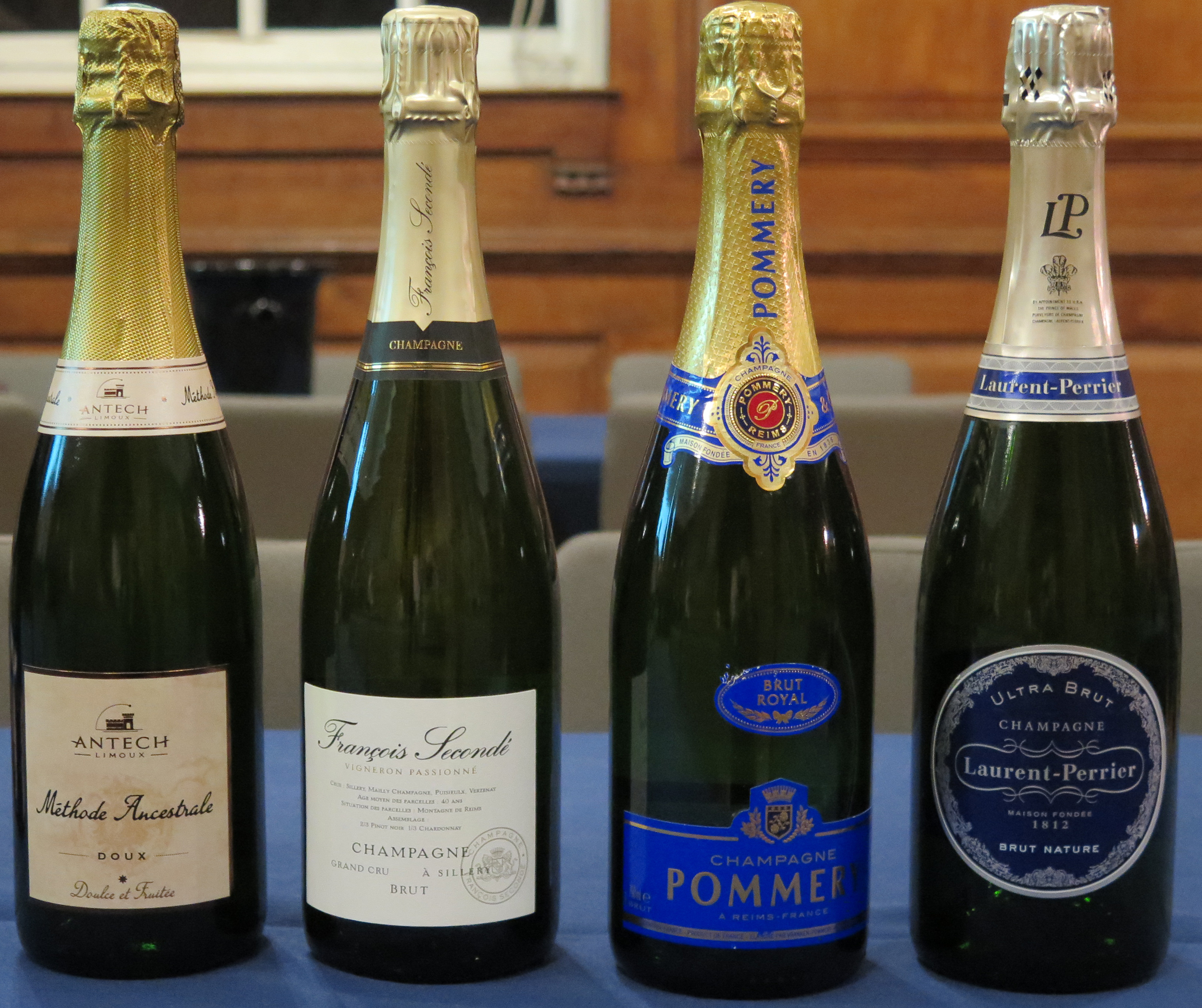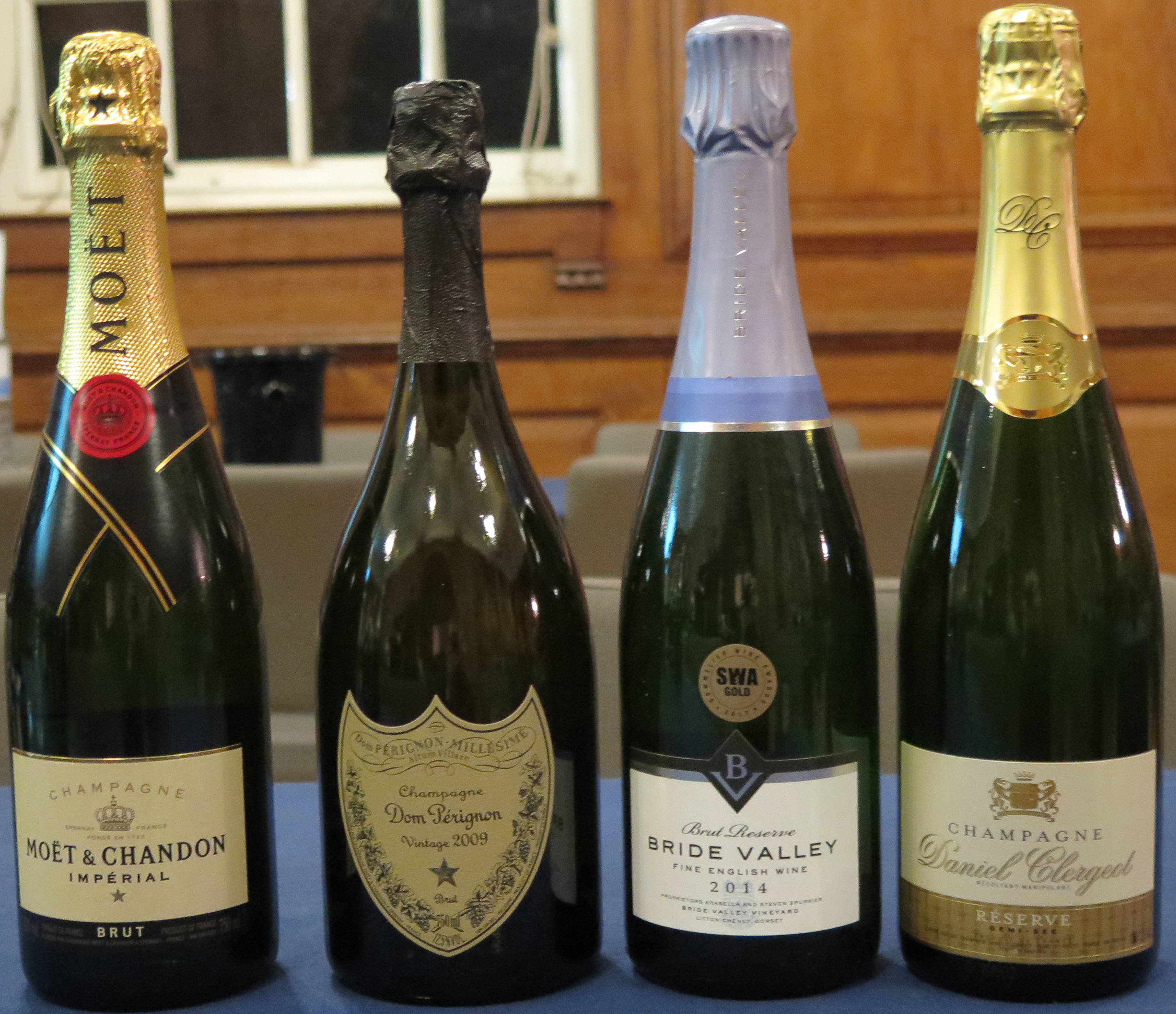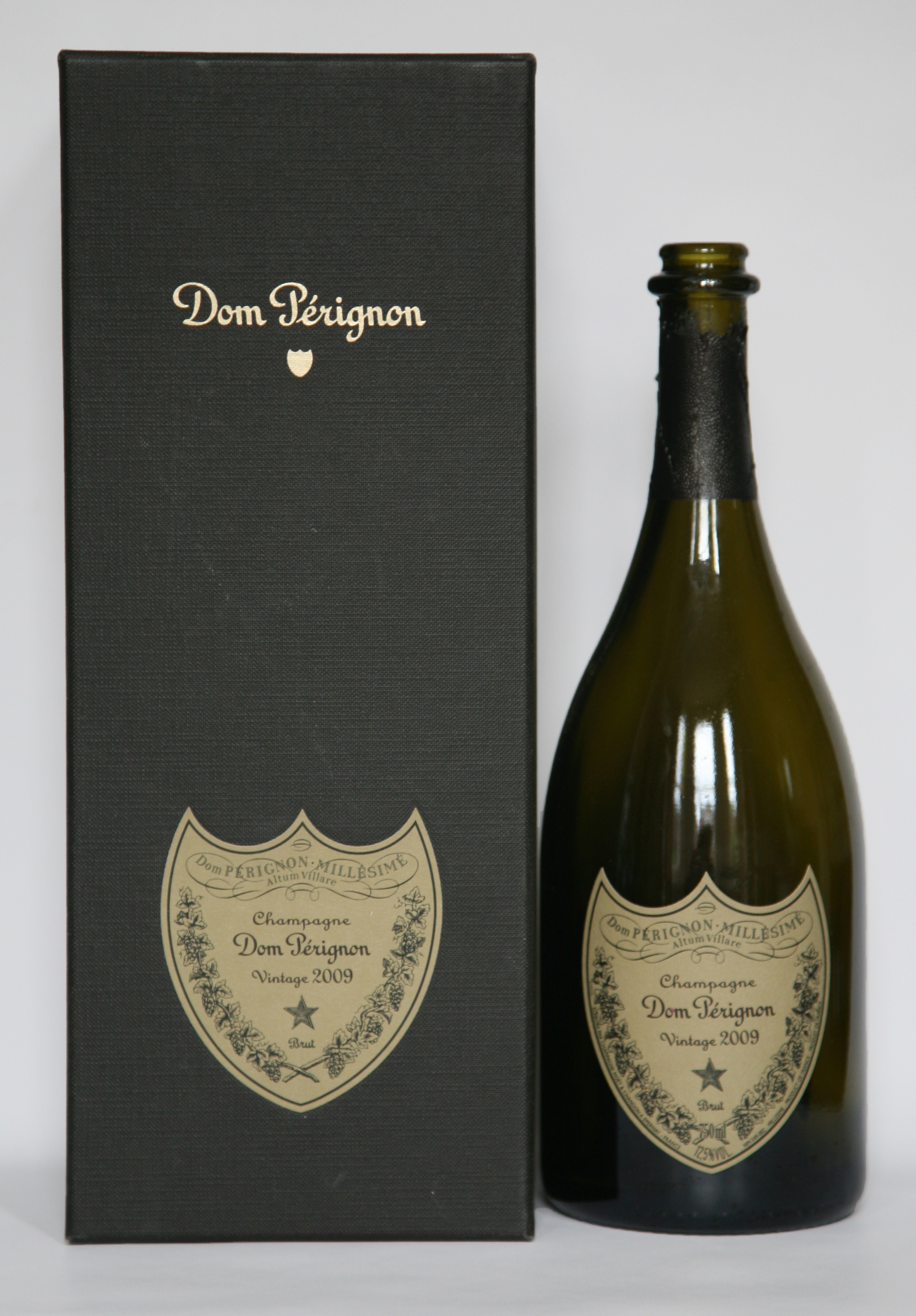 It is always a delight to be enchanted by someone who is passionate about their subject and who is, in addition, an expert with unparalleled knowledge. We were given hidden insights and a thorough appreciation of the changing styles of wine called Champagne, since its origins in the seventeenth century. So it was at the first tasting of the year on 29thJanuary 2019 when our own Graham Harding demonstrated the irresistible allure of the golden elixir.
It is always a delight to be enchanted by someone who is passionate about their subject and who is, in addition, an expert with unparalleled knowledge. We were given hidden insights and a thorough appreciation of the changing styles of wine called Champagne, since its origins in the seventeenth century. So it was at the first tasting of the year on 29thJanuary 2019 when our own Graham Harding demonstrated the irresistible allure of the golden elixir.
 Starting with a Blanquette de Limoux Brut Reserve 2015 (Antech) made in the Ancestral Style of the sixteenth century grown at altitude in the Pyrenees originally by the Benedictines, we were presented with an appley fizz which woke up the taste buds and surprised us with its sweetness. 90% Mauzac grapes along with Chenin Blanc to make up the acidity and Chardonnay for lift provided a well balanced and interesting start to the evening.
Starting with a Blanquette de Limoux Brut Reserve 2015 (Antech) made in the Ancestral Style of the sixteenth century grown at altitude in the Pyrenees originally by the Benedictines, we were presented with an appley fizz which woke up the taste buds and surprised us with its sweetness. 90% Mauzac grapes along with Chenin Blanc to make up the acidity and Chardonnay for lift provided a well balanced and interesting start to the evening.
The Sillery Grand Cru (Francois Secondé) followed: still appley but more delicate and deeper in colour. Sillery was once the best-known most expensive of the wines sold under commune names – dearer than Domaine de la Romanée Conti.Originally it was produced d as a still wine to accompany food, which was what drove the decrease in sweetness in the after 1850. Before that 50g to 100g of sugar per litre was added and this dropped to around 15- 50g, while today it is more like 5-8g per litre. Unusually for today’s wines our bottle was made up of 100% Sillery Pinot Noir grapes grown on Montagne de Reims producing a more metallic and creamier notably drier wine, more like the Champagne taste we are used to and, of course, fizzy. The drier taste became a fashionable and elitist bandwagon which was enthusiastically embraced by the English post 1860 when Gladstone cut duties on fortified wines which saw Champagne replace sherry as the first choice of the upper classes.
An elegant Pommery represented the shift towards consistency and branding which occurred in the late nineteenth century started by Adolphe Hubinet who recognised the value of focusing sales in hotels and clubs and introducing vintages to boost demand. This resulted in a jump in prices from 70 shillings a dozen in 1877 to over 100, even as high as 120 shillings, per dozen in 1887. The Pommery Brut Royale (NV) showed a generous white flower and citrus nose with a more rounded and rich palate altogether, more bready with red berry notes.
Onto the classic Laurent Perrier Ultra Brut relaunched in 1981 and kindly donated by Adam Guy. Made up of 55% Chardonnay and 45% Pinot Noir grapes and positioned for the British market it showed a complex nose of white fruit with honeysuckle notes and was bone dry and hard on the palate with even bubbles on the tongue. This wine was first launched by Laurent Perrier as ‘Sans Sucre’ in the 1890s with first a ‘no sugar’ positioning and then a ‘natural properties’ line. They introduced the first consumer promotion in 1894: a competition to collect corks for rewards which were aimed at both men and, daringly, women as well, which was considered scandalous at the time and led to accusations of appealing to the demi-monde.
 Moët and Chandon had the biggest volume sales throughout the nineteenth century and was so popular that it became rather commonplace so it was difficult to know how to move the brand forward. They launched their Brut Imperial in 1879 with no added liqueur and then in 1884 a vintage-dated Dry Imperial. The 1930s were dark days for Champagne but things started to look up in the economic boom of the 1950s when it once again became an icon of popular culture – such as its association with motor racing. Brut Imperial today is a blend of Pinot Noir (30-40%), Chardonnay (20-30% ‘for added finesse’) and Pinot Meunier. This has provided a fuller, lasting taste on the palate and subtle apple accents without high acidity and it has become their flagship wine.
Moët and Chandon had the biggest volume sales throughout the nineteenth century and was so popular that it became rather commonplace so it was difficult to know how to move the brand forward. They launched their Brut Imperial in 1879 with no added liqueur and then in 1884 a vintage-dated Dry Imperial. The 1930s were dark days for Champagne but things started to look up in the economic boom of the 1950s when it once again became an icon of popular culture – such as its association with motor racing. Brut Imperial today is a blend of Pinot Noir (30-40%), Chardonnay (20-30% ‘for added finesse’) and Pinot Meunier. This has provided a fuller, lasting taste on the palate and subtle apple accents without high acidity and it has become their flagship wine.
 The Moët and Chandon Dom Pérignon 2009 was a real treat and the highlight of the tasting for many. It is in the world’s top 1% of wines with a score of 97. Interestingly, the entrepreneur Eugene Mercier created and controlled the name Dom Pérignon in the late nineteenth century and name only came to Moët & Chandon when a son of the house married Mercier’s daughter. A beautifully balanced wine, complex flavours of toast, brioche and almond with subtle hints of apple and peach and honey and overtones of smoke. Bold but light and creamy on the tongue.
The Moët and Chandon Dom Pérignon 2009 was a real treat and the highlight of the tasting for many. It is in the world’s top 1% of wines with a score of 97. Interestingly, the entrepreneur Eugene Mercier created and controlled the name Dom Pérignon in the late nineteenth century and name only came to Moët & Chandon when a son of the house married Mercier’s daughter. A beautifully balanced wine, complex flavours of toast, brioche and almond with subtle hints of apple and peach and honey and overtones of smoke. Bold but light and creamy on the tongue.
Bride Valley Sparkling reserve from Dorset followed. This is made up of one third each of Chardonnay, Pinot Noir and Pinot Meunier and priced to French Champagne levels.Slightly sweeter on the palate than the French wines, this was reminiscent of the French style of the 1950s and 60s, with citrus rhubarb and creamy notes making it a good refreshing example of English sparkling wine.
Lastly back to France for the Daniel Clergeot Demi-Sec produced by this Récoltant Manipulant at Les Riceys in the south of Champagne. Chardonnay, Pinot Noir and Pinot Blanc make this fruity sweet wine brim with flavours of baked apples and raisins. An interesting and distinctive end to an evening of discovery.